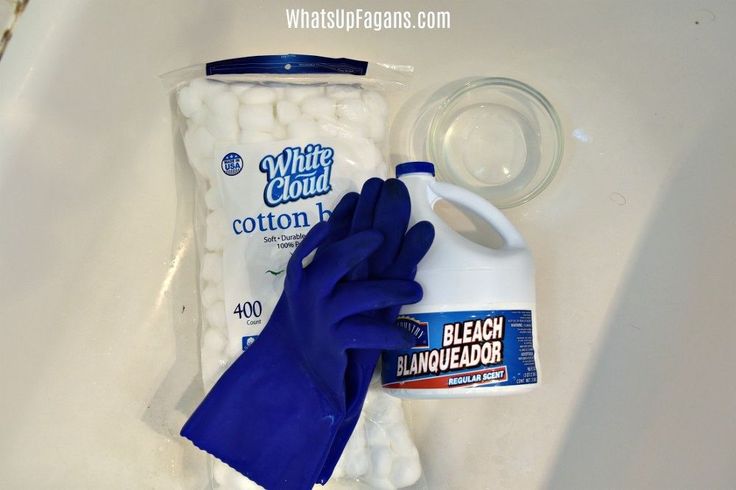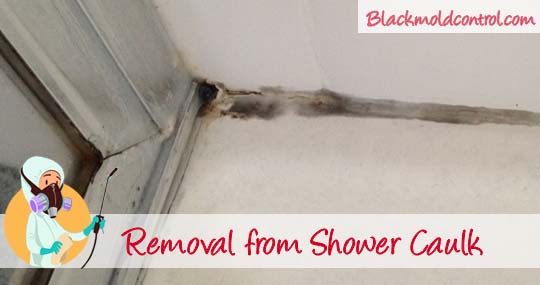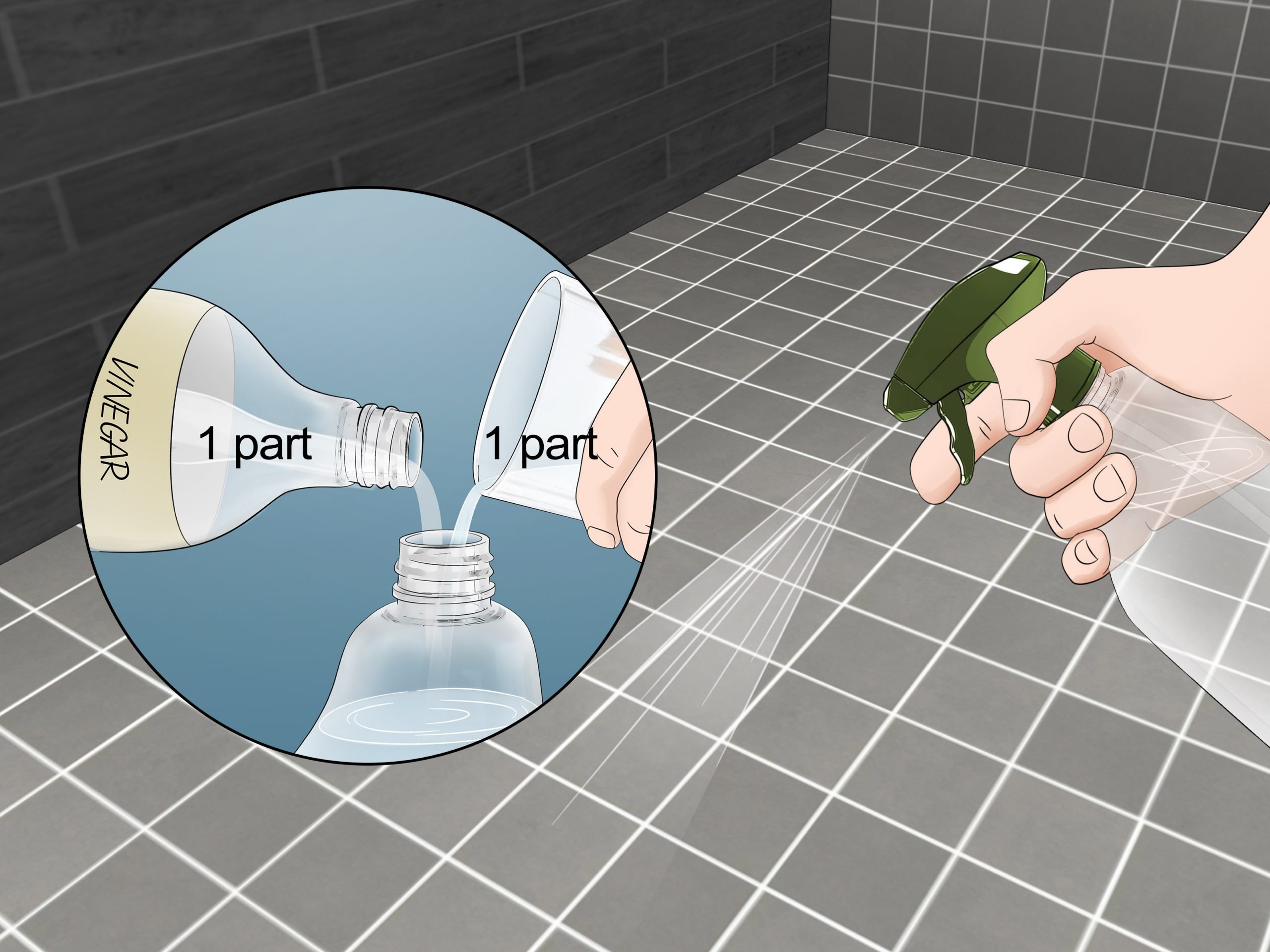How To Remove Black Mold In Shower Drain
Shower drains contain cellulose materials via soap scum, body hairs, and oils and lots of moisture so they can be a breeding ground for black mold growth!
Its important to keep drains open and clear of cellulose materials. Treat the drain with vinegar and/or baking soda and water solution periodically to keep it clean and prevent mold spores from developing.
You can then follow the tutorial found on this page for a good method of removing black mold from a shower drain, or you can try this simpler method.
The important thing is to NOT pour bleach down your drain, and to take your time with the process.
How To Prevent Mold In Grout
The drier the tiles, the smaller the chance of mold developing in the grout lines.
As you certainly know, prevention is the best cure. And indeed, why spend so much time and effort cleaning mold from grout, when you can simply prevent it from appearing altogether? All you need to do in order to keep mold under control is to deprive it of the main prerequisite for its growth moisture. Just keep the tiles dry and youll never have to worry about the harmful microorganisms.
But how can you remove moisture from a room that is designed to be wet such as the bathroom, for example? It sounds absurd.
You cant, of course, but you can reduce the dampness there is a big difference between getting wet and staying permanently wet.
Here are some simple, yet highly efficient measures you can take to lower the humidity in your bathroom, kitchen, and other wet areas of your home and prevent mold growth:
1. Keep doors and windows open for as long as possible to ensure proper air flow within the home:
- Let the bathroom window stay open for at least 15 minutes after you turn the shower off, so that excess moisture can move out of the room rather than condense on the walls and tiles
- Leave the shower door open when the shower is not in use
- Keep the kitchen windows open while cooking to allow the steam to escape
- Ventilate the laundry room, basement, and attic as often as possible.
8. Fix leaky faucets and showerheads to remove the source of excess moisture in your bathroom and kitchen
Is Shower Mold Toxic
Due to the way bathrooms and showers are constructed today, the black mold you see in your shower is less likely to be the really hazardous type of mold. This is because your shower areas and surfaces dont have cellulose which is required for most of the really hazardous types of mold to grow.
That isnot to say that one of the more toxic molds cant ever grow in your shower. Theycan. If you have a bigger issue in your bathroom or home and THOSE spores haveinfiltrated your shower then your shower can become a breeding ground for somereally bad mold. But regular ol mold in the shower usually more allergenicthan anything.
Also Check: How To Get Rid Of Black Mold In Basement
Get Rid Of Stubborn Shower Mold Infestations
When mold continues to regrow on grout, the treatments in use may be insufficient or conditions may remain conducive to growth. Consider reapplying vinegar or sodium borate solutions and be sure to wait at least 60 minutes for either of these treatments to sink in before scrubbing and wiping off the affected surface.
Some porous materials are impossible to disinfect thoroughly enough to avoid recontamination. Any substance that is completely contaminated with mold may need to be torn out and replaced.
Failure to remove contaminated items may cause the same type of mold to resume growing on affected surfaces and spread. If you are not sure what type of mold is growing in a residence, it may be worthwhile to schedule an inspection, mold test or consultation to get a mold remediation estimate.
Also Check: Uv Light Basement Mold
Book An Online Consultation

We specialize in positive and empowering virtual consultations with practical advice to help homeowners sell more quickly and for more money.
The products on this blog have been independently selected because I like them. Some of the links on this blog are affiliate links, meaning, if you choose to click on a link and make a purchase, I earn a small commission. This commission comes at no additional cost to you and is paid 100% by the merchant, which helps me continue to create free content for my readers so its a win-win! Thank you for supporting my blog and my business!
Vannessa Rhoades is the author of Just Right! Easy DIY Home Staging: Second Edition and founder of Three Bears Home Staging®. She is an HSR Certified Professional Home Stager and Certified Expert E-Designer and has staged and consulted on hundreds of properties in person throughout the Houston metro area and virtually across the country.
You May Like: How To Treat Mold In Your House
Cleaning Mold From Grout Using Chlorine Bleach
For especially stubborn mildew stains, you may need to use a chlorine bleach like Clorox to remove mildew. Chlorine bleach will also kill black mold, but it is always better to double-check with a professional to ensure the mold does not return.
Before you start, you also want to make sure there are no traces of vinegar, lemon juice, hydrogen peroxide, or any other cleaning products remaining in the bathtub. Mixing chlorine bleach with specific products can result in toxic gas, so it is best to start fresh by rinsing all cleaning products down the drain before cleaning your shower walls with bleach.
Once you are ready for how to get rid of mold in shower, start by mixing equal parts water and part bleach in a spray bottle. Be sure to label the bottle for safety and future use. Spray the shower grout with the bleach solution, and let it sit for around 15 minutes before scrubbing.
Clean grout using a bristle brush and some elbow grease to scrub out the mildew in between the grout. While this cleaning solution is a great way to remove mold and mildew from almost every surface, to avoid bleaching, you can also use oxygen bleach to remove mildew on clothes and upholstery.
Follow Us
How Do You Clean Stubborn Grout
Grout Cleaning Instructions
Read Also: How To Treat Mold On Plywood Subfloor
Must Pay Attention Points
When you follow any process of these, you need to pay attention to some matters and need to know some basics. If you do that, you can do your cleaning work more efficiently and can save you time.
- You should always soak the shower tiles surface for an hour. It will help the grout to sit the cleaning solution, and then you can easily remove the dirt. You think that, when you clean stubborn stains from cloth, you used to soak it for sometimes. Then it becomes easier to clean the cloth. Itâs similar to your tiles.
- It is good to avoid metallic brush to clean shower tiles. Besides, do not use steel wool. All the tiles have a certain softness level. So, when you use a metallic brush, it will affect the upper layer of the tiles. So, to avoid damages of the tiles and grout, avoid metallic brush.
- When you use water after cleaning the surface of the tile, try to use warm water. It is good for two reasons. First, you can wash the greasy things from the surface easily with warm water. Second, warm water reacts with the solution such as baking soda, hydrogen peroxide, lemon juice, as an air cleaner. Besides, warm water kills the mold.
- You can use natural essential oil with the cleaning solution. It helps to make your bathroom fresh and smell good.
How To Keep Mold Out Of Your Shower
Once youve completely rid yourself of the mold problem in your shower, you need a strategy to keep it from coming back. If can identify that a leak was responsible for the problem, you can call a plumber or repair person to investigate and resolve that issue. But sometimes, other factors can be responsible for the slow spread of mold, whether its the nasty black mold or the more common kinds of gray and pink mold or mildew.
You May Like: How To Prevent Mold On Furniture
How To Prevent Mildew
Moisture is mildews best friend. Learning how to prevent mildew in shower grout is just as important as cleaning it in the first place.
To prevent the growth of mildew, you need to keep your surfaces dry. Considering that you find it mostly in your kitchen and bathroom places that are bound to get wet. So how do you prevent mildew and keep these spaces dry?
You may not be able to keep these areas completely dry at all times. But you can make efforts to make them less damp.
The following tips and suggestions help you with ways to prevent the growth of mildew in your house.
Disinfect Surfaces With A Baking Soda Solution
Baking soda is a great cleaner and disinfectant. You can make a baking soda paste for scrubbing grout or use baking soda to disinfect surfaces after removing the mold.
As a bonus, baking soda helps to get rid of odors.
To create a baking soda solution for use in a spray bottle, combine one to two tablespoons with two cups of water. This should dilute the baking soda enough for it to remain a liquid.
To create a paste for cleaning difficult areas, combine one part baking soda to one part water. Apply the paste to the surface and allow to dry before scrubbing.
Read Also: What Does Toxic Black Mold Look Like
How To Remove Mold From Grout
Fortunately, there are several cleaning agents that work to remove mold from the grout between tiles. When cleaning the grout between tiles, first check to make sure the tile cleaning agent you use won’t cause any damage to that specific kind of tile. Some tiles should not come into contact with bleach or abrasive agents like baking soda.
How To Clean Black Mold Off Silicone In The Shower

The shower is the perfect temperature and as you are about to step in, you see black mold on the silicone in the shower! You think to yourself, How can that be? I keep my shower clean! Well, black mold can grow in the shower because of moisture and water.
How do you clean black mold in the shower on silicone? Try spraying white vinegar on it and then wipe it away. Will this always work? Yes! Vinegar is strong and works just like a chemical without harmful effects. This is the most environmentally friendly and healthiest way to start before moving to harsher chemicals if needed.
Lets take a look at black mold and silicone, how to clean it, how to prevent it, and warning signs it may be getting worse.
Also Check: Can Mold Grow On Concrete
Another Way To Get Rid Of Black Mold
You can combine Lysol, baking soda, and Borax to make another surefire way to eradicate your black mold.
- ¼ cup of Borax
Mix the ingredients in a suitable container. They shouldnt need much time to mix, and you neednt wait before applying them. Place the paste on the black mold areas and scrub.
The black mold should lift off instantly, and once it is gone, follow our tips on how to prevent it in the future. You wont even need any additional cleaning products.
The Very Best Way To Clean Shower Tile Mildew With Set
If vinegar and tea tree oil arent doing the trick, then its time to move onto another homemade shower mold cleaner: baking soda. This grout cleaner is fantastic when you need to remove a mildew stain that wont disappear. Baking soda can also be used with vinegar in the washing machine to remove mold and mildew from a shower curtain.
- Toothbrush or bristle brush
Start by creating a thick paste by adding water to the baking soda and blending it well. Add the baking soda paste to the shower walls, getting in between the grooves of the tile. Scrub the paste into the grout lines, using a toothbrush to work the cleaner deep into the crevices and cracks.
Next, spray some vinegar over the baking soda paste and wait for the bubbling to stop. After the fizzing has subsided, continue scrubbing the tile grout until visibly clean. Rinse with clean water and dry.
You May Like: How To Kill Mold On Plants
What Causes Black Mold In Shower
Mold loves to grow in warm, damp and humid places, which is most certainly the conditions that happen in showers! The shower area is prime for the growth of mold! Bathroom surfaces literally make the perfect breeding ground for different varieties of mold.
If there is a mold problem in your home, you need to clean up the mold AND fix the water problem that is causing the mold to grow. Thats why its important to control humidity in your home, always use the bathroom ventilation fan, leave the bathroom door open , and/or open the bathroom window.
Tips For Deep Cleaning Your Bathroom Shower
Spring cleaning starts with a deep clean your shower and bathtub.
Emily Fazio
Oxygen-based bleach and washing soda are safer alternatives to consider when youre looking for a powerful indoor cleaning solution. Theyre notably more eco-friendly and treat and prevent the growth of mold in a really effective way.
Next time youre deep cleaning your bathroom tiles, pull this DIY grout cleaner recipe from your memory bank:
Recommended Reading: How To Get Mold Out Of Ductwork
Where To Look For Bathroom Mold
The main problem with bathroom mold is that it can appear almost anywhere from caulk to towels. Bathroom is perfect for mold growth due to a constant high level of humidity.
If you want to check your bathroom for signs of mold, then you should pay attention to these places:
- Caulk, grout, and tiles
- Towels and bathroom robes
- Shower curtains and mats
Of course, if you are not sure whether or not you have mold in your bathroom , you can always rely on professionals to do all the necessary checks. Furthermore, they will provide insights into how to keep your bathroom mold-free. In case you already have bathroom mold, they will deal with it effectively to prevent it from coming back.
Read Also: Mould On Bathroom Ceiling
Tips To Get Rid Of Mold In Shower Caulk
Molds are the most repulsive elements you can see in a bathroom. Mold spores can be found all around the house, but they thrive and multiply in a warm and moist environment, like your shower.
If they are fed and unchecked, they can spread quickly, and your once clean and spotless bathroom can be covered in black mold. They stick to the grout, and before long, they begin to grow behind it.
In this guide, were going to show you how to get rid of black mold in your shower caulk, and not just that, well let you know why they are there, and how to prevent future growth.
Dont Miss: How To Get Mold Smell Out Of Basement
You May Like: Does Kilz Paint Kill Black Mold
Seal The Gaps And Cracks On The Grouts And The Tiles
Grout gaps and cracks that develop over time hold a lot of debris that these bugs eat.
Make sure the crevices are sealed. Seal these cracks with silicone-based sealants. The silicone-based sealants are strong, waterproof, and they last for a long time.
Whats the best part? Silicone sealants cant be chewed through by bugs.
There are loose floor tiles with broken grout between the tiles that need to be repaired.
Bugs like centipedes can hide in cracks and gaps in the bathroom floor when these cracks and gaps become wider.
You should also seal the cracks in the bathroom windows.
Cracks can serve as entry points for flies which are attracted by dampness.
Install window screens on the windows as well. This will keep the bugs out of your bathroom and house.
You May Like: Ultraviolet Light Kills Mold
How To Get Rid Of Bathroom Mildew

Bathroom surfaces, especially tile and grout located in or near your shower or tub, are common breeding grounds for mildew. This is largely because these surfaces are warm, moist and exposed to
light often. While you may want to treat mildew quickly because its unsightly, its important to treat mildew fast because it can spread and cause mold to grow on your bathrooms surfaces.
Like its grown-up counterpart, mold, mildew can cause allergies, respiratory problems and more serious health issues that have the potential to affect your nervous system. If you suspect a mold issue, please contact the leasing office right away.
Read Also: How To Tell If Mold Is Active
What Causes Mold In The Shower
Moisture and humidity are the two main causes of mold growth. Unfortunately, bathrooms are constantly moist. The water from the sink, toilet, and shower increases the risk of mold growth.
Taking a hot shower raises the humidity in the room. The increased humidity also encourages the development of mold spores.
Mold tends to grow in the areas that remain moist, such as:
- Shower curtains
- Corners and crevasses
- Areas around fixtures and drains
Caulk and grout are also prone to mold growth. Caulk has a rubbery texture that is difficult to wipe clean while grout is porous, allowing mold spores to grow below the surface.
